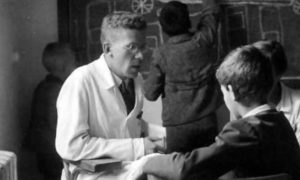The Guardian: Asperger’s Children: The Origins of Autism in Nazi Vienna – review

 What’s in a name? Ever since 1981, when the writing of Austrian paediatrician Hans Asperger was introduced to an English-language audience, autism professionals have embraced Asperger syndrome (AS) as a condition. It excludes the most debilitating intellectual, communication and physical difficulties associated with classic autism. Between 1994 and 2013, AS was an official diagnosis in the American psychiatric bible The Diagnostic and Statistical Manual of Mental Disorders and is still widely used internationally. But who was Hans Asperger and how did the medical establishment come to honour him?
What’s in a name? Ever since 1981, when the writing of Austrian paediatrician Hans Asperger was introduced to an English-language audience, autism professionals have embraced Asperger syndrome (AS) as a condition. It excludes the most debilitating intellectual, communication and physical difficulties associated with classic autism. Between 1994 and 2013, AS was an official diagnosis in the American psychiatric bible The Diagnostic and Statistical Manual of Mental Disorders and is still widely used internationally. But who was Hans Asperger and how did the medical establishment come to honour him?
Over the decades, a myth has evolved that Asperger, who worked in Vienna during the second world war, was akin to Oskar Schindler. He had talked up his young autistic patients’ potential in order to protect them not only from the legalised mass sterilisation of the “genetically unfit”, but also to prevent them from becoming victims of the more covert “euthanasia” T4 programme which led to the murder of over 300,000 disabled people. But now the American historian Edith Sheffer has systematically destroyed that persona in Asperger’s Children, a superbly researched account of his career.
She has drawn on records recently discovered by the assiduous Austrian researcher Herwig Czech. These wartime documents reveal that, instead of saving children in his care, Asperger wrote wholly damning descriptions of at least 42 of his patients. His signature is on the paperwork that transferred them to the notorious Am Spiegelgrund clinic where almost 800 children died due to neglect or lethal overdoses. It would have been impossible for Asperger not to know his patients’ likely fate; the killings at the asylum led to public protests.